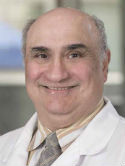| Abstract: |
Importance: Proton radiation therapy (PRT) has reduced radiation-induced toxic effects, such as mucositis and xerostomia, over conventional photon radiation therapy, leading to significantly improved quality of life in patients with head and neck cancers. However, the prevalence of osteoradionecrosis (ORN) of the jaw following PRT in these patients is less clear. Objective: To report the prevalence and clinical characteristics of ORN in patients with oral and oropharyngeal cancer (OOPC) treated with PRT. Design, Setting, and Participants: This case series reports a single-institution experience (Memorial Sloan Kettering Cancer Center, New York, New York) between November 2013 and September 2019 and included 122 radiation therapy-naive patients with OOPC treated with PRT. Data were analyzed from 2013 to 2019. Main Outcomes and Measures: Clinical parameters, including sex, age, comorbidities, tumor histology, concurrent chemotherapy, smoking, comorbidities, and preradiation dental evaluation, were obtained from the medical record. Patients with clinical or radiographic signs of ORN were identified and graded using the adopted modified Glanzmann and Grätz grading system. Characteristics of ORN, such as location, clinical presentation, initial stage at diagnosis, etiology, time to diagnosis, management, and clinical outcome at the last follow-up, were also collected. Results: Of the 122 patients (mean [SD] age, 63 [13] years; 45 [36.9%] women and 77 [63.1%] men) included in this study, 13 (10.6%) developed ORN following PRT during a median (range) follow-up time of 40.6 (<1-101) months. All patients had spontaneous development of ORN. At the time of initial diagnosis, grade 0, grade 1, grade 2, and grade 3 ORN were seen in 2, 1, 9, and 1 patient, respectively. The posterior ipsilateral mandible within the radiation field that received the full planned PRT dose was the most involved ORN site. At a median (range) follow-up of 13.5 (0.2-58.0) months from the time of ORN diagnosis, complete resolution, stable condition, and progression of ORN were seen in 3, 6, and 4 patients, respectively. The 3-year rates of ORN and death in the total cohort were 5.2% and 21.5%, while the 5-year rates of ORN and death were 11.5% and 34.4%, respectively. Conclusions and Relevance: In this case series, the prevalence of ORN following PRT was found to be 10.6%, indicating that ORN remains a clinical challenge even in the era of highly conformal PRT. Clinicians treating patients with OOPC with PRT should be mindful of this complication.. © 2022 American Medical Association. All rights reserved. |














